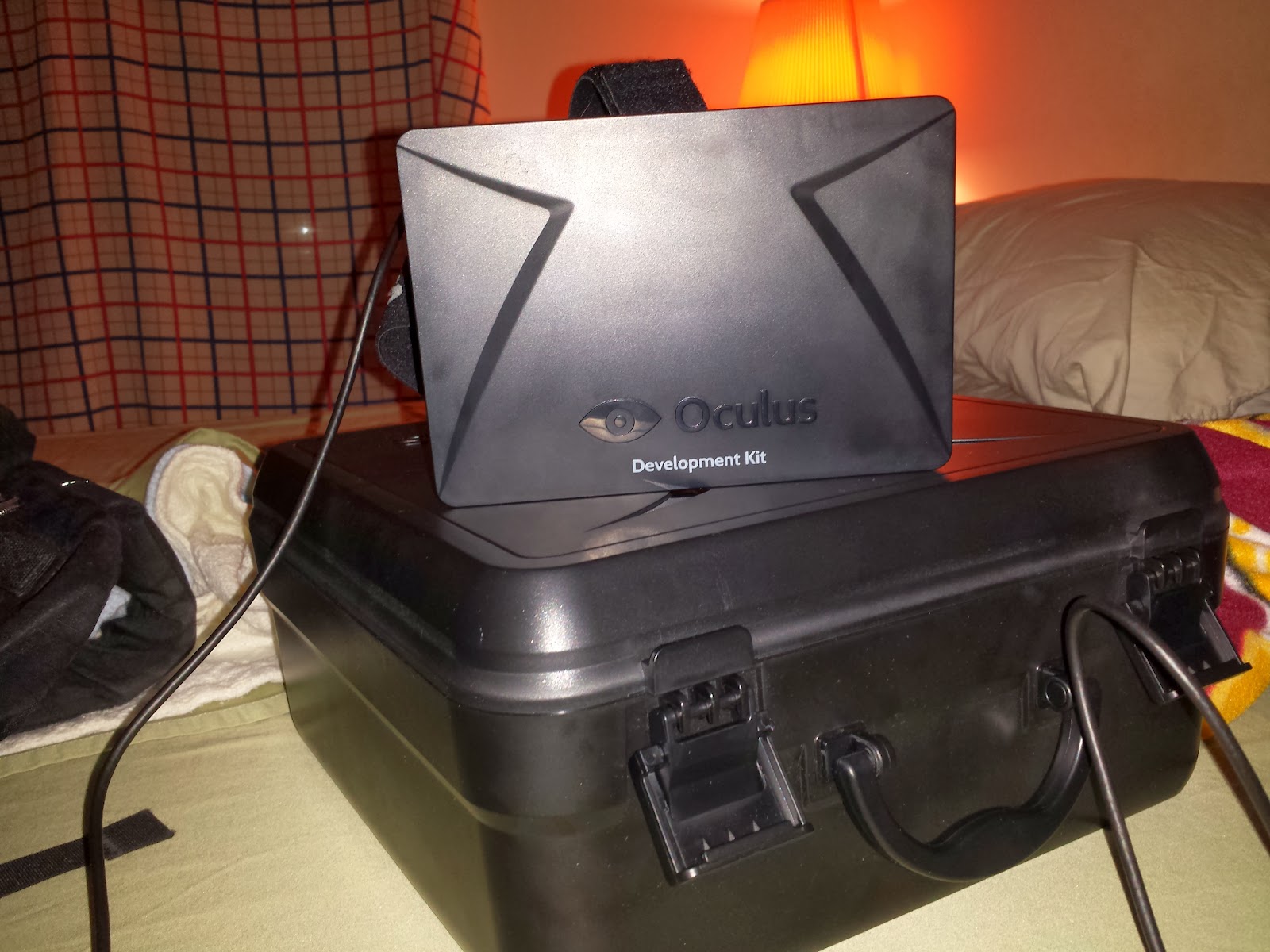How is any of this better than VR?
Before I talk about this further, let's take a step back and talk about why this is way better than virtual reality. You may have read my previous post about how virtual reality is just not ready for the world (if not, go through that really quickly). Virtual reality is a long ways off, partially because of where the technology is right now, but also because of the purposes it will fulfill. Virtual reality is not something your everyday consumer is going to want yet. Gamers? Maybe, if they like heavy headsets being worn for hours at a time. Various industries? Again, potentially for very niche markets. Virtual reality is just not ready right now because we can only fool sight, sound, and potentially smell. Sense of touch? Yeah, there's a whole lot we need to do before we can properly allow someone to walk around without physically moving.
 |
| Sorry Oculus VR, but I think it's a bit too early for you in the world. |
But augmented reality is a completely different story. Augmented reality has been on the verge of being real for quite some time now. In fact, the Microsoft Kinect is what really jump-started this idea to begin with. Think about it: The Microsoft Kinect can see depth, meaning it knows exactly how a room is laid out, what's in it, and how objects would interact in the room. The only problem that it had was its size and hardware requirements. If Microsoft has managed to shrink it down, then that's the perfect thing to include in a Google Glass-sized device and allow for some of the most amazing technological feats the world has seen.
The best part is, augmented reality doesn't need a sense of touch to succeed. Virtual objects can be holograms, as Microsoft points out, and passing through a hologram is what we want! This has huge potential, as it means that the technology can start being fully realized right off the bat. Want to have your child play with Legos? Give them this headset and they won't even have to clean up the mess! Want to see how furniture will look in your living room? Throw on the headset! Trying to cook dinner but not sure what to do? Bring up a virtual chef! Wanna watch TV on a giant theater screen? Put on the headset and let it make one! The ideas are simple, but endless, and this is something that virtual reality doesn't have. Augmented reality is a great first step, because it can compliment what we already have and make it better, whereas virtual reality attempts to replace what we have halfheartedly. Virtual reality will be great further down the line when the technology is better and the applications are clearer, but right now the world needs an intermediary step in technology.
So why aren't other companies going with AR?
Actually, they are. There's only two companies that are going with virtual reality: Facebook and Sony. Sony however is focused on virtual reality for gaming, nothing else, and Facebook.... well, Facebook seems to just want to make a splash in the industry again. Microsoft has obviously selected augmented reality, but what about Apple and Google? Well, Apple has remained silent on the subject, though they are rumored to be working on a headset of some sort. While it looks like a virtual reality headset, I'm still skeptical. Google on the other hand is actively working on the industry.
Augmented reality is getting closer and closer to being available to the average consumer, and that is very exciting news to me. I've done a small amount of development with augmented reality in the past, and it's a field that I can't wait to finally be able to do more in. What are your thoughts on this? Feel free to post a comment below about whether you think augmented reality is the next big thing, or something different!
The Next Step
A while back, Google went ahead and released Google Cardboard, what looked like Google's attempt at virtual reality. I think that Google Cardboard was not suspected to be as big of a hit as it was by Google, but the reality was that it was pretty awesome and has recently been upgraded a bit more. That said, I don't believe Google is going with virtual reality. Why? They invested in a company called Magic Leap. Before I go into this, let me backtrack just a little bit: Last semester while I was finishing school, a professor (thank you Aaron!) told me to take a look into a company called Magic Leap since they were doing some pretty neat stuff. I gave it a look and.... ran into a wall of patents. There was nothing I could find out on their website about what they do, other than the fact that Google had donated five-hundred million dollars to them recently. So, like anyone would do, I started to dig through articles about them and read their patents. You can read a neat article about some theories surrounding them here but long story short, they too seem to be creating a similar augmented reality solution to Microsoft, which leads me to believe Google is going towards augmented reality as well.Augmented reality is getting closer and closer to being available to the average consumer, and that is very exciting news to me. I've done a small amount of development with augmented reality in the past, and it's a field that I can't wait to finally be able to do more in. What are your thoughts on this? Feel free to post a comment below about whether you think augmented reality is the next big thing, or something different!
No comments:
Post a Comment